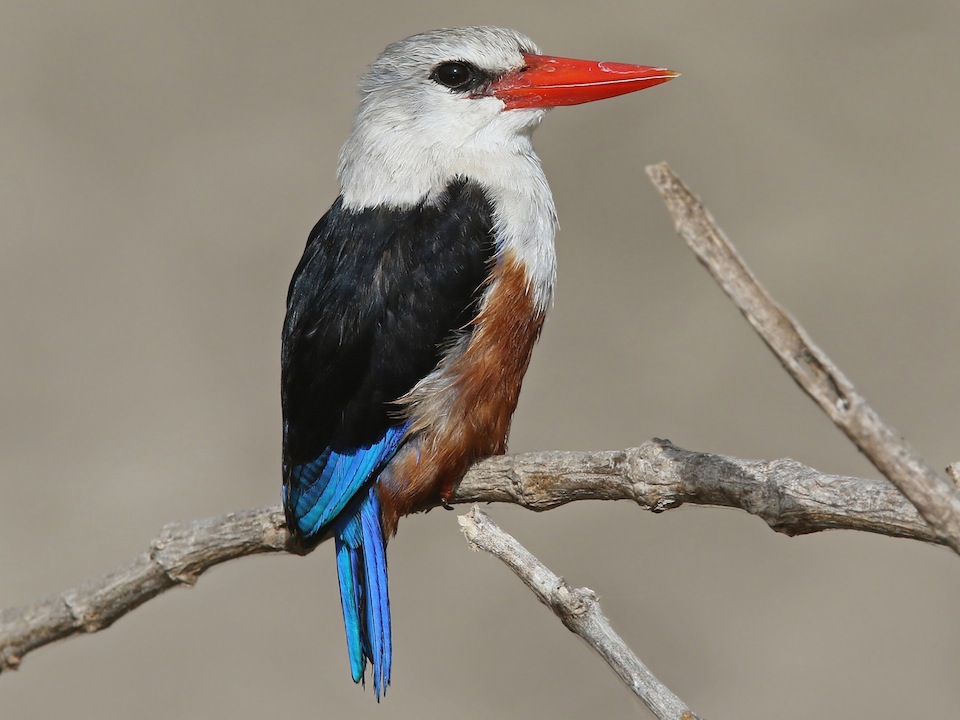
Do you have a keen eye to observe birds of Oman as they fly in and out of Oman during different seasons, especially during summer?
Keen birdwatchers in Oman have sighted a range of birds – from the Rufous-tailed Scrub Robin to the Greater Flamingo – in different parts of Oman since May 1 this summer. This has prompted birdwatches in Oman to get down to some serious birdwatching to note and regiser sightings of rare birds of Oman.
According to ebird.org, the birds were sighted by observers mostly in Dhofar region (especially Salalah,Wadi Darbat, Wadi Naheez, Khawr Taqah, Wadi Dakoor, Khawr sawli, near the Al Qara mountain waterfall, Ayn Athum, and Gilob) as well as in Muscat (especially in the Sultan Qaboos University campus, Qurriyat lake park, SQ Botanical Garden, and Qurm park and mangroves) and in some parts of Dahirah region.
eBird is an environment-centred organisation which gathers such information in the form of checklists of birds, archives it, and freely shares it to power new data-driven approaches to science, conservation and education. It is among the world’s largest biodiversity-related science projects, with more than 100 million bird sightings contributed annually by eBirders around the world. A large number of birdwatchers in Oman regularly register their sightings of different birds of Oman.
The observers sighted a variety of birds of Oman, mostly 2-6 in number in each sighting. Prominent among these were eight Gray Herons sighted at Khawr Taqah, Eight Cinnamon-breasted Buntings, 20 Tristram’s Startlings, 35 Arabian Partridges, and eight African Paradise Flycathers – all on the same day in Wadi Naheez, 1 Clamorous Reed Warbler in Qurm Natural Park, 4 Indian silverbills, 6 White-eared Bulbuls, 15 Laughing Doves, and 10 Purple Sunbirds – all at the SQU campus in Muscat, 2 Indian Pond Herons in Khawr Taqah, and 10 Gray-headed Kingfishers in Ayn Hamran in Dhofar. The most beautiful sighting was of 30 Greater Flamingos in Salalah Marina on June 3.Oman attracts birds migrating from Asia (the Indian-Malayan region) to Africa, where they winter, as well as migrants from Africa to the southern parts of the country. The sultanate is also a destination for old species coming from Europe every year. Surveys estimate that each year, over half a million shorebirds make a stopover at Barr al Hikman sanctuary of predominantly inter-tidal mudflats and lagoons.
Some of the interesting sightings this summer
African Paradise Flycatcher
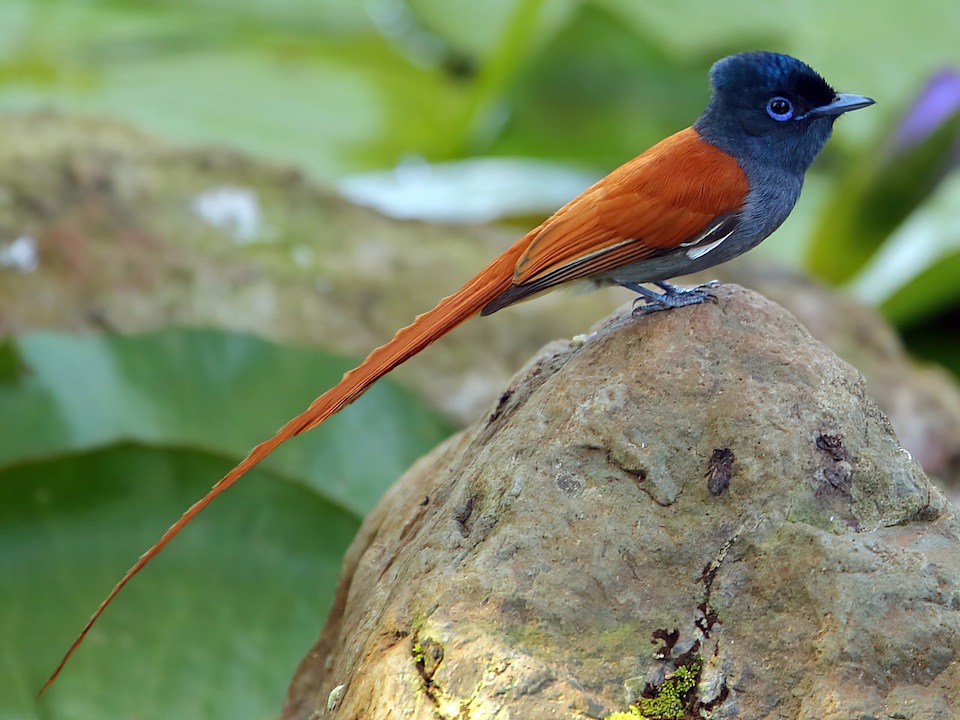
This remarkable flycatcher occurs in both rufous and white morphs, but it always has grayish underparts and a strong crest. The breeding male has ludicrous central tail feathers, twenty centimeters long, that trail like the ribbon of a rhythmic gymnast, while the female lacks the tail streamers and has a smaller crest. Singles and pairs occasionally join flocks in open woodland, riverine forest, and thickets, avoiding lowland evergreen forest.
Rufous-tailed Scrub Robin
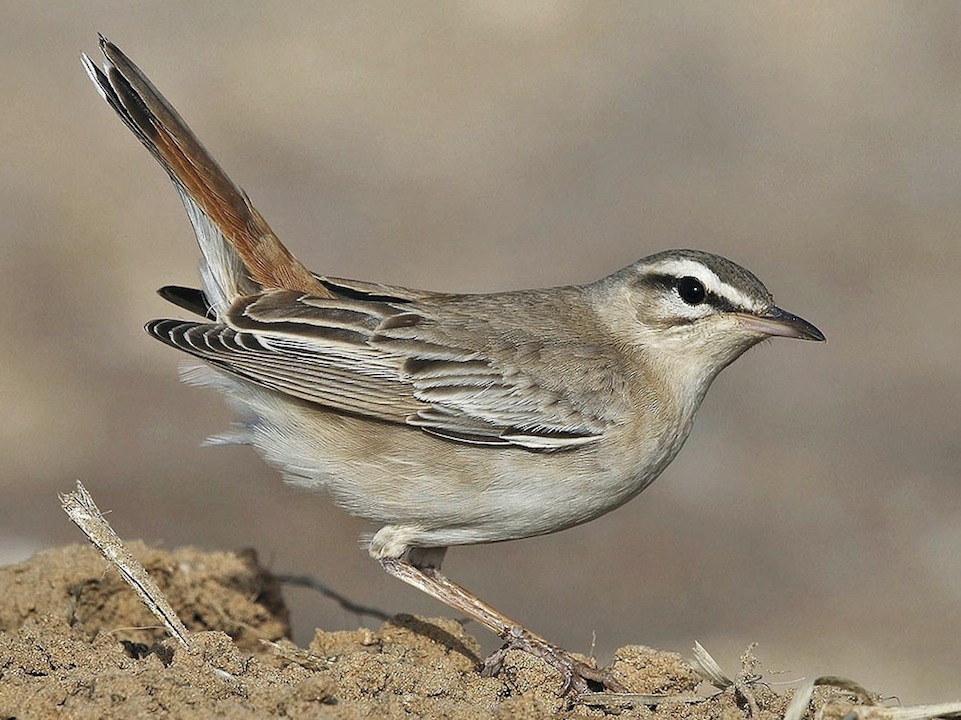
Distinctive sandy-brown songbird with a long rufous tail tipped black and white, often held cocked. The head has a strong white eyebrow and dark eyeline. The song is melodic and thrush-like and the call is a harsh ‘tek’. Usually seen foraging on the ground in open areas with dense bushes, sometimes in gardens and orchards close to human habitation.
Greater Flamingo
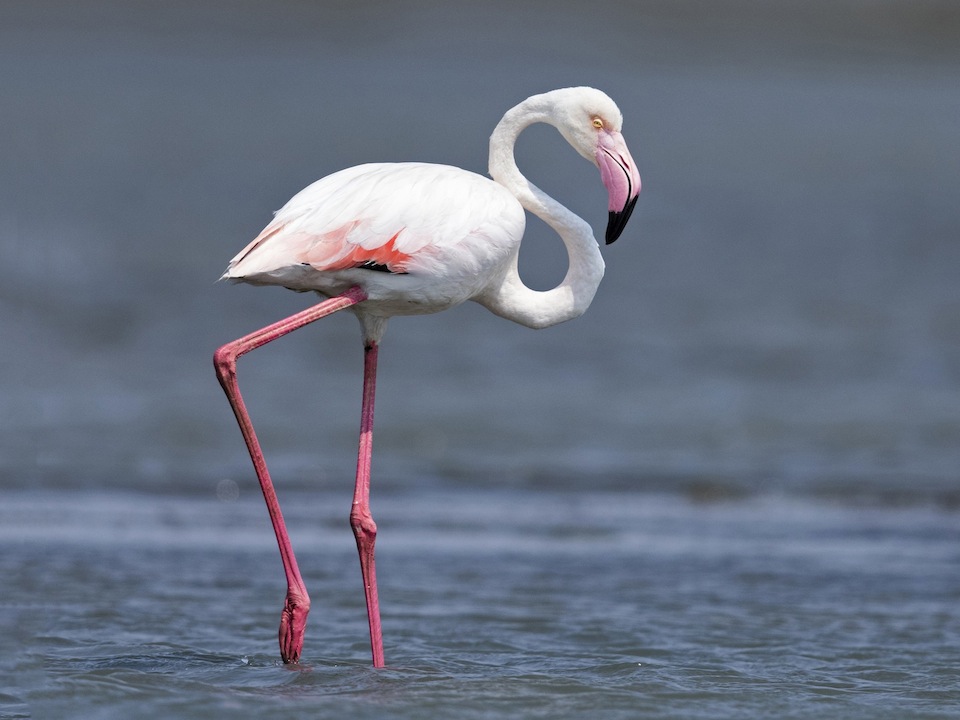
e, with a long, ‘coat hanger’ neck, big kinked bill, and very long pinkish legs. Plumage at rest whitish with pale pink blush and some deep pink often visible on closed wings. Flies with long neck and legs extended, when deep pink-and-black wing pattern striking.
Arabian Scops Owl
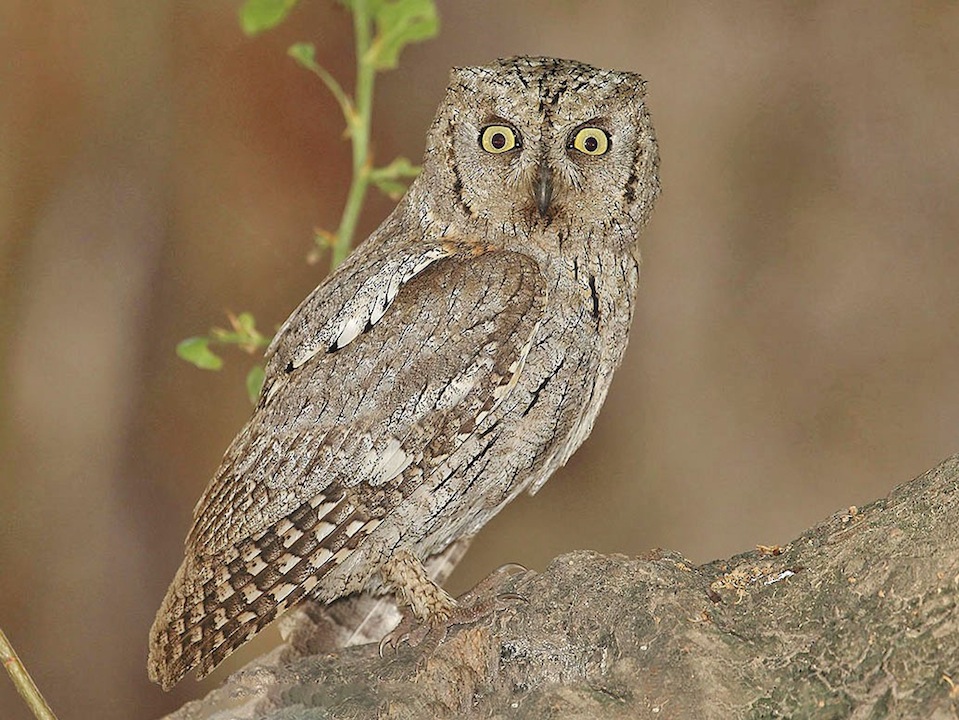
A small, compact, gray-brown owl with small ear tufts. Found in woodland, usually in arid and hilly areas. Most often detected by voice: a frog-like chirp that is repeated every 5–8 seconds, sometimes for long periods. Very similar to Eurasian and Pallid Scops-Owls. Darker overall than Pallid Scops-Owl, with thicker streaking and cross-barring on the underparts.
Arabian Partridge
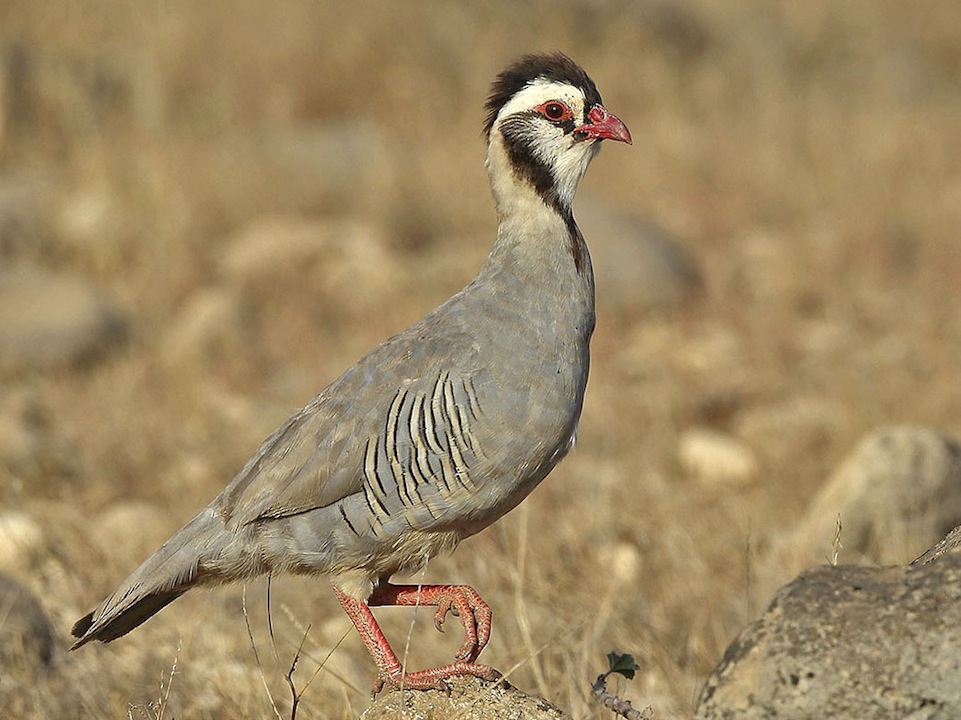
Handsome partridge of southern Arabia. Pale gray overall, with a tan patch on the neck, black-and-white slashes along the sides, and a complicated black-and-white facial pattern. In flight, shows dark wingtips and black sides to the tail. Found on rocky hillsides with significant amounts of vegetation. Usually in small groups. The most common vocalisation is a series of ‘chok’ calls.
Indian Pond Heron
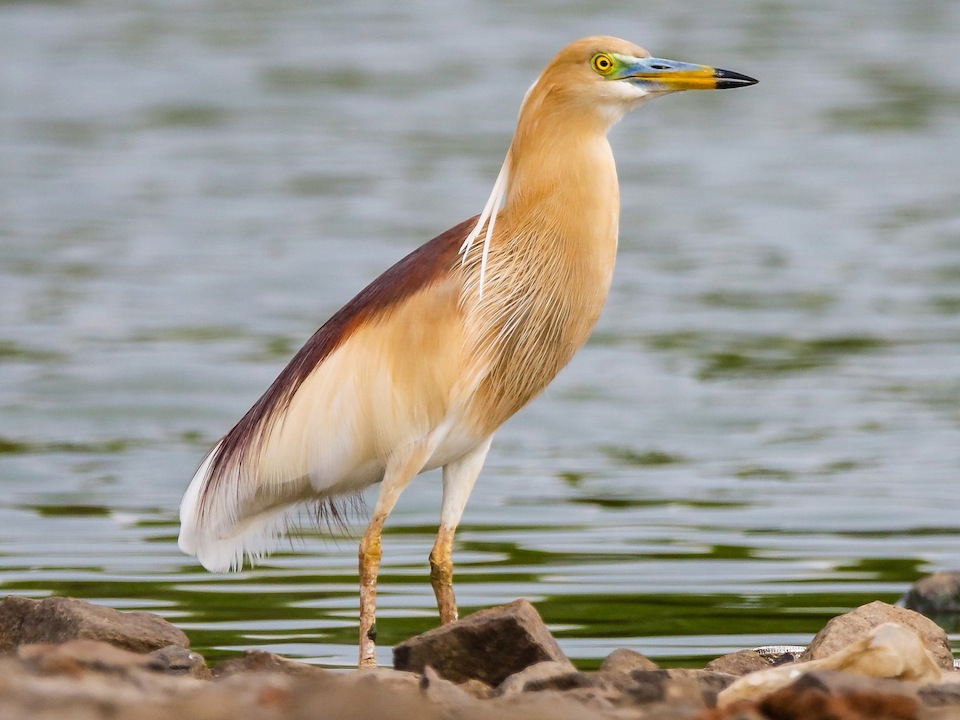
A small heron that is common in most aquatic habitats across the Indian subcontinent. Adults in breeding plumage have a dark reddish brown back that contrasts with a yellowish head, neck, and breast. In non-breeding plumage they are virtually indistinguishable from non-breeding Chinese Pond Heron. In flight, adults appear surprisingly white due to their strikingly white wings, underparts, and tail. These are some of the stunning birds of Oman that come to Oman during summer months.
*(Photos: Courtesy – eBird)
Popular bird watching sites in Oman
Khawr al Baleed
This lagoon takes its name from the ancient city which lies on the banks of this lagoon. The lagoon flanks the city on the east and north. In ancient times, this lagoon was connected to the sea and used as a natural port due to its depth in some parts.
Khawr Al Dahareez
In its location and importance, this lagoon is similar to Khawr Awqad.
Khawr Ad Dahareez is located at the eastern entrance of Salalah city in Dhofar.
Khawr al Maghsayl
Khawr Al Maghsayl lies at the eastern end of Jabal Al Qamar (Moon Mountain) in the Governorate of Dhofar. The area of this lagoon is about half a square kilometre, its length is about three kilometres and its width 150 metres.
Barr al Hikman (Al Hikman Peninsula)
Barr Al Hikman is located in the centre of Oman’s east coast in Al Wusta governorate, 500km south of Muscat. This island is considered one of the most important bird migration stations both in Oman and Southeast Asia.
Damaniyat Islands Nature Reserve
Damaniyat Islands Nature Reserve is located in Wilayat Al Seeb in the Governorate of Muscat and Wilayat Barka in Al Batinah, and lies about 18 kilometres off the coast of Barka. The reserve features pristine beaches on which the white sands are caressed by the sea’s crystal blue waters.
Khawr Awqad
This lagoon is located in Dhofar, the outskirts of the ancient Awqad city. Its area is about 16 hectares (40 acres) and is one of the sites frequented by birds nesting throughout the year, such as the egrets, herons and Abu Mahgl, amongst others.
Dhofar beaches
Dhofar is characterised by attractive and rich beaches. The governorate’s most important beaches are Al Maghsayl, Raysut, Al Hafah, and the shores of Wilayat Taqah, Mirbat and Sha, noted for the purity of their sands. There are a number of lagoons, such as Sawli, Al Baleed, Ad Dahareez, Atheeb and Salalah, where you can see large numbers of flamingos.














